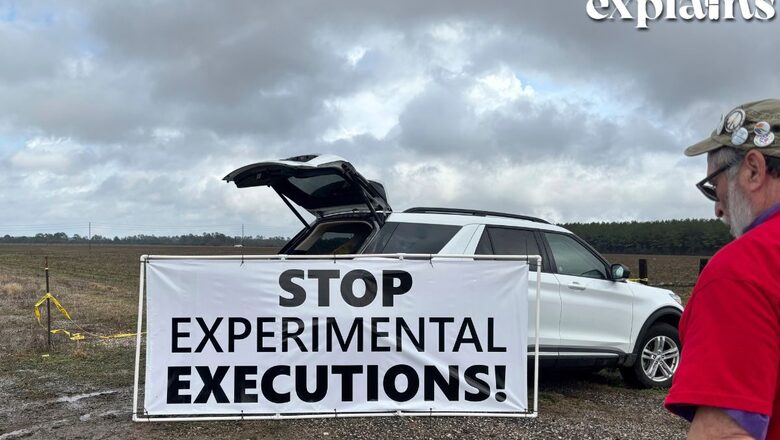
views
The first execution using nitrogen gas in the United States has put the spotlight on the country’s use of capital punishment.
Kenneth Eugene Smith convicted of a 1988 murder-for-hire became the first person anywhere to be executed by Nitrogen Hypoxia in the southern state of Alabama on Thursday.
The state had first tried to execute him by lethal injection in November 22, but botched the procedure. After that, Smith chose to be put to death by novel means.
Here’s why his execution has caused outrage and how does the nitrogen hypoxia work:
How Executions are Carried out in the US?
The United States has a long history of developing methods of execution that quickly become widely adopted, starting with electrocution in the early 1900s to replace hangings, followed by the gas chamber and ultimately lethal injection, which was developed by an Oklahoma doctor in the 1970s.
But most executions in the US are generally carried out by lethal injection, but Smith was the first person to be executed using nitrogen gas. The US used lethal injection for 89 of the 92 executions carried out in the country between 2019 and 2023.
In the procedure, three drugs are typically used: an anaesthetic, a paralytic and a chemical that stops the heart, according to The Economist. However, in recent years, several American pharmaceutical companies have stopped supplying these drugs as they do not want to be associated with the death penalty.
Capital punishment has been abolished in 23 US states, while the governors of six others — Arizona, California, Ohio, Oregon, Pennsylvania and Tennessee — have put a hold on its use.
Five states have approved the use of firing squads, but the last execution carried out using this method was in 2010 in the western state of Utah. But three states have authorized the use of nitrogen gas, a method the United Nations has likened to “torture.”
How Nitrogen Execution Works?
Nitrogen makes up 78% of the air. It is only safe to inhale when mixed with oxygen, which comprises 21%.
During Nitrogen hypoxia, the inmate breathes pure Nitrogen through a respirator mask and the breathing is replaced with pure Nitrogen.
This deprives the person of oxygen, leading to unconsciousness in a few seconds and ultimately causing death in some minutes.
As per studies, oxygen deprivation can cause pain similar to that of a heart attack. Nitrogen hypoxia may cause the prisoner to defecate or vomit while remaining conscious.
Oklahoma was the first state to contemplate the use of nitrogen gas nearly a decade ago after the 2014 botched execution of Clayton Lockett who clenched his teeth, moaned and writhed on the gurney before a doctor noticed a problem with the intravenous line and the execution was called off before Lockett died, 43 minutes after the procedure began.
Why It has been Controversial?
According to Alabama Attorney General Steve Marshall, the execution of Kenneth Smith went off as planned.
After being outfitted with a face mask that forced him to breathe pure nitrogen and deprived him of oxygen, Smith shook and writhed on the gurney for at least two minutes at an Alabama prison before his breathing stopped and he was declared dead.
The Nitrogen execution is very painful and distressing, making it highly controversial. The 22-minute execution that saw the murderer writhing and thrashing for several minutes was described as a “horror show” by his spiritual advisor Reverend Jeff Hood.
The American Veterinary Medical Association wrote in its euthanasia guidelines in 2020 that nitrogen hypoxia is not an acceptable method of euthanasia because it is “distressing”.
In cases when the prisoner’s mask is not placed correctly, the nitrogen gas could leak, putting other people in the room, such as a spiritual adviser, at risk.
Alabama’s Unhappy History of Executions
Numerous other states, including Alabama, have had problems for years administering lethal injection or obtaining the deadly drugs as manufacturers have objected to their drugs being used to kill people.
Like other states in the US, Alabama has struggled to recruit highly trained medical staff to administer lethal injections.
Both the American Medical Association and the American Board of Anesthesiology have banned their members from participating in such executions.
The first attempt to execute Kenneth Eugene Smith was called off after staff struggled to put an intravenous line into his arm. That was the third consecutive execution attempt in which Alabama officials had problems administering lethal injections, according to The Economist report.


















Comments
0 comment